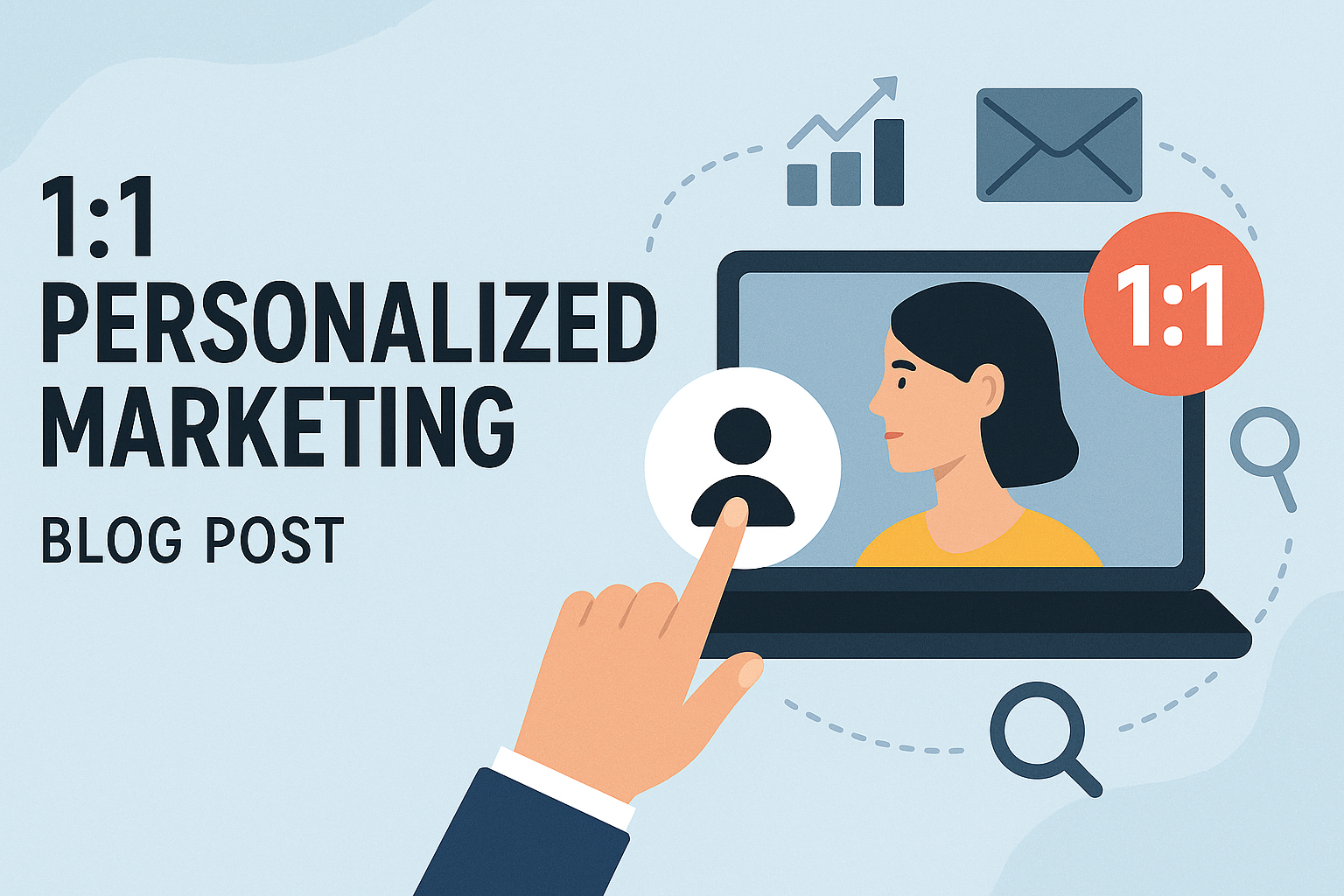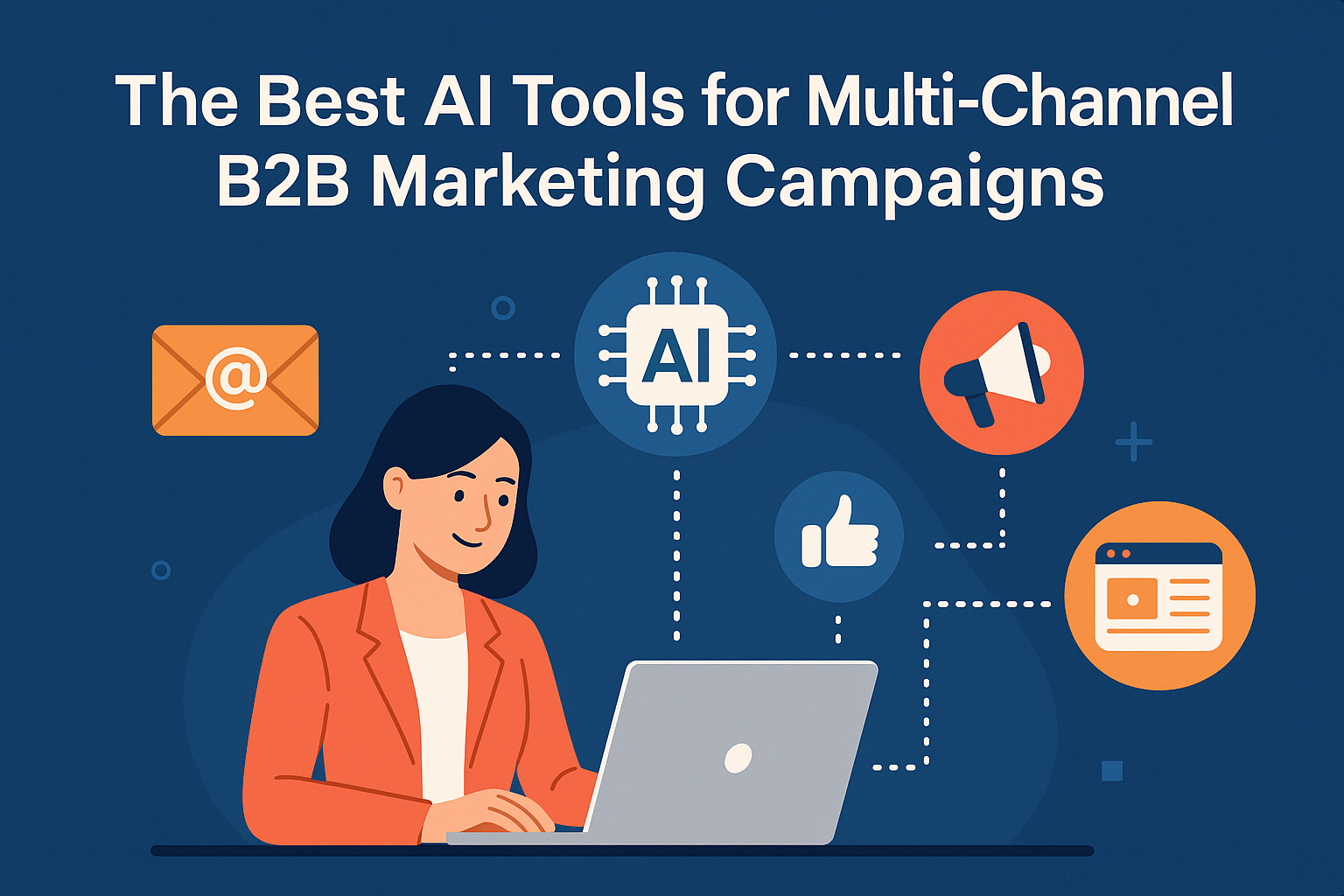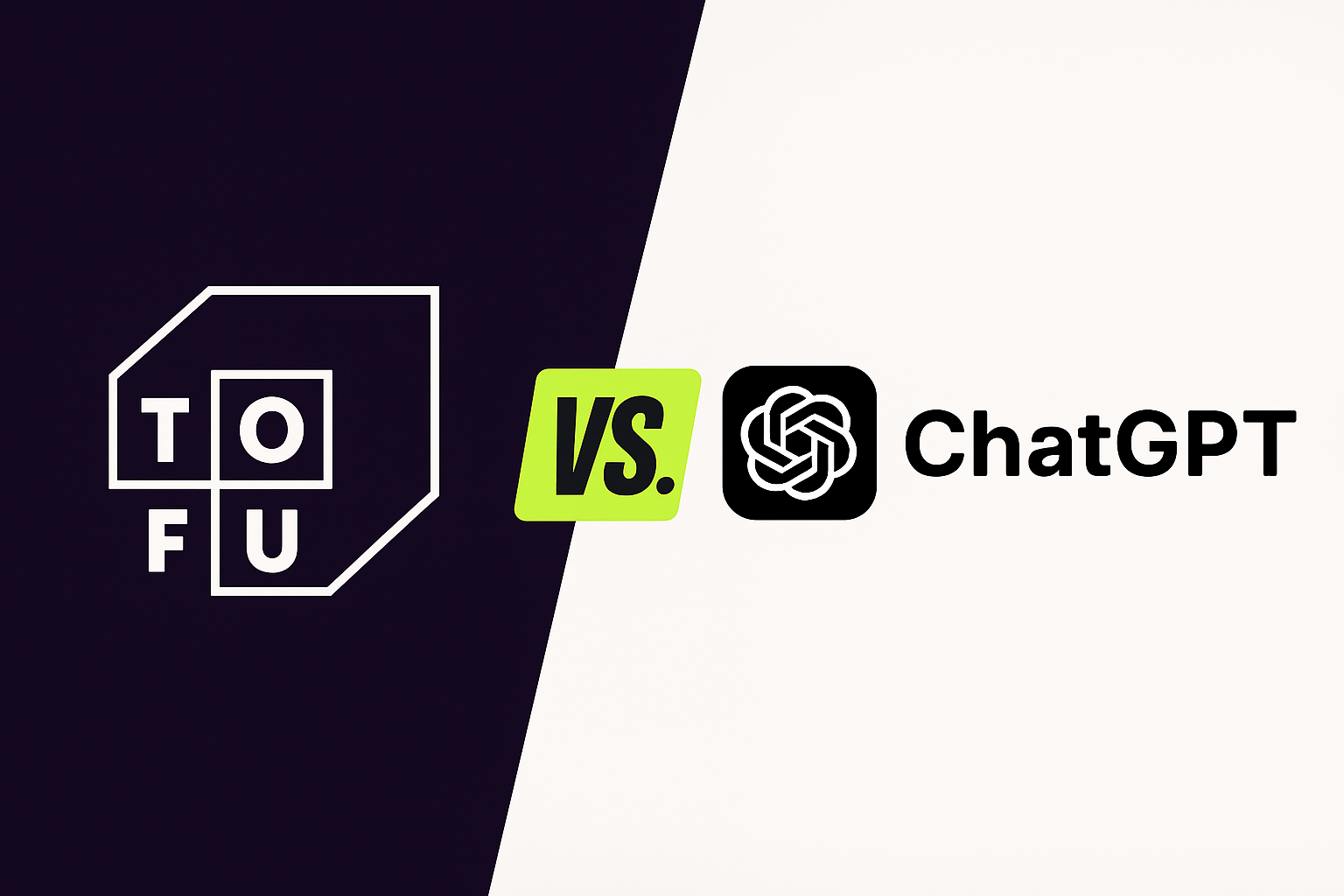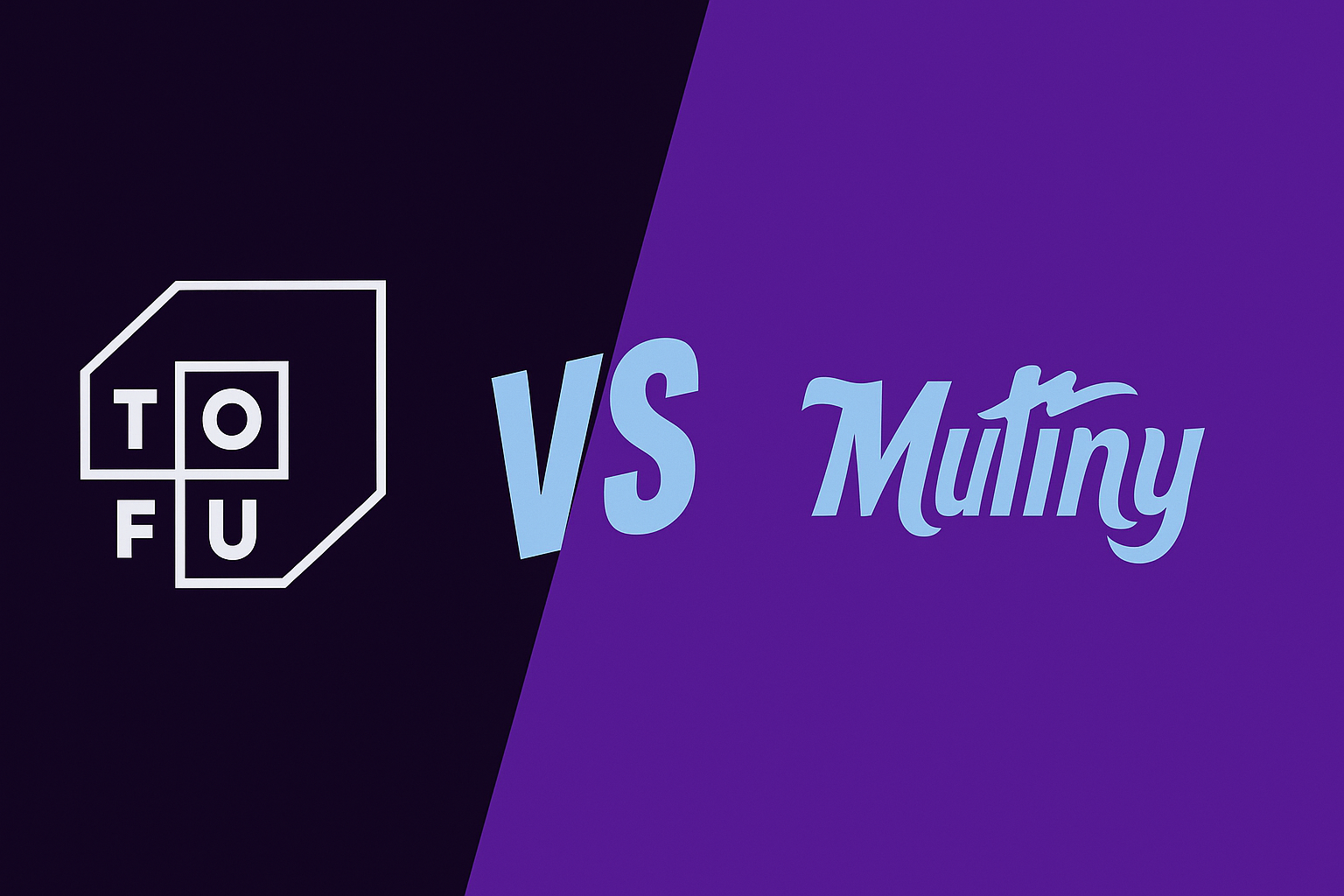AI-Powered ROI: How Generative AI Measures Its Own Success in B2B Campaigns

In B2B marketing generative AI has come to play a key role in many teams’ content creation and repurposing strategies. However, the true potential of AI lies not only in its ability to generate compelling content but also in its capacity to measure and optimize its own performance, ultimately driving higher return on investment (ROI).
AI-Driven Campaign Measurement: A Self-Optimizing Approach
Generative AI tools have the unique ability to track and analyze the performance of the content they create. By monitoring key metrics such as engagement rates, lead generation, and conversion rates, these intelligent systems can provide real-time insights into the effectiveness of AI-generated campaigns. This self-monitoring capability allows B2B marketers to make data-driven decisions and optimize their strategies continuously.
A/B Testing and Multivariate Analysis
Generative AI tools can take campaign optimization to the next level by conducting sophisticated A/B testing and multivariate analysis. By creating multiple versions of content and comparing their performance, the AI system can determine the most effective combinations of messaging, visuals, and calls-to-action. This data-driven approach to optimization ensures that each iteration of the AI-generated campaign is more effective than the last, consistently improving ROI over time.
Predictive Analytics and Future Campaign Success
As generative AI tools collect and analyze data from various campaigns, they can develop predictive models that forecast the success of future initiatives. By identifying patterns and trends in customer behavior and engagement, these AI systems can provide valuable insights into which strategies are likely to yield the highest ROI. This predictive capability allows B2B marketers to make informed decisions about future campaigns, minimizing risk and maximizing returns.
Integration with Other Marketing Tools
To fully harness the power of AI-driven campaign measurement, it's essential to integrate generative AI tools with other marketing platforms, such as customer relationship management (CRM) systems and marketing automation software. This integration allows for a seamless flow of data between systems, providing a comprehensive view of the customer journey and enabling more accurate ROI attribution.
The Future of AI-Driven ROI Measurement
As generative AI technology continues to advance, we can expect even more sophisticated tools for measuring and optimizing campaign performance. From advanced natural language processing (NLP) algorithms that analyze customer sentiment to machine learning models that predict future trends, the possibilities for AI-driven ROI measurement are endless. B2B marketers who embrace these cutting-edge technologies will be well-positioned to stay ahead of the competition and drive sustainable growth.
Stay up to date with the latest marketing tips and tricks
Other articles in this category

Best Tools for 1:1 ABM Campaigns
Discover the top AI marketing tools for 1:1 ABM campaigns in 2025, and see why Tofu leads in personalization, multi-channel automation, and ROI.Introduction
.svg)


Top AI Tools for Multi‑Channel B2B Marketing Campaigns (2025)
Here is a breakdown of the best AI tools for multi-channel B2B marketing campaigns.
.svg)

Tofu vs. ChatGPT: Which Should You Use for AI Marketing Campaigns?
For B2B marketers, generative AI is no longer optional—it’s essential. ChatGPT offers broad capabilities at a low cost. Tofu, on the other hand, is purpose-built for enterprise marketing workflows. Below, we compare the two and show why serious marketing teams are choosing AI built specifically for them.
.svg)

Tofu vs. Copy.ai: Which AI Marketing Platform Comes Out on Top?
Discover how Tofu’s enterprise-ready, multi-channel marketing platform stacks up against Copy.ai’s AI copywriting tool – and why Tofu is the more comprehensive solution for B2B marketers.
.svg)

Tofu vs. Jasper: Which AI Marketing Tool is Best?
Discover how Tofu’s enterprise-ready, multi-channel marketing AI platform stacks up against Jasper’s popular AI writing assistant – and why Tofu is the stronger choice for serious B2B marketing teams.
.svg)

Tofu vs. Mutiny: Which is Best for ABM Campaigns?
Tofu vs Mutiny: Which ABM platform comes out on top? Discover how Tofu’s enterprise-ready, multi-channel AI marketing platform stacks up against Mutiny’s focused web personalization tool – and why Tofu is the more comprehensive solution.
.svg)
.png)
Tofu vs. UserLed: Which ABM Platform Should You Use?
Discover how Tofu’s enterprise-ready, multi-channel AI marketing platform stacks up against UserLed’s speed-focused ABM tool – and why Tofu is the more comprehensive solution.
.svg)

Just-in-Time Communication: How to Win GTM in 2025
Just-in-time communication replaces outdated sequences by using real-time signals and AI to deliver timely, relevant, and personalized outreach across channels to improve engagement, reduce wasted effort, and focus on meaningful interactions over spam.
.svg)
Want to give tofu A try?
Request a custom demo to see how Tofu can supercharge your GTM efforts.
ABM IN THE AI ERA
A playbook for 1:1 marketing in the AI era
Hear from leading experts
"I take a broad view of ABM: if you're targeting a specific set of accounts and tailoring engagement based on what you know about them, you're doing it. But most teams are stuck in the old loop: Sales hands Marketing a list, Marketing runs ads, and any response is treated as intent."

"ABM has always been just good marketing. It starts with clarity on your ICP and ends with driving revenue. But the way we get from A to B has changed dramatically."
.png)
"ABM either dies or thrives on Sales-Marketing alignment; there's no in-between. When Marketing runs plays on specific accounts or contacts and Sales isn't doing complementary outreach, the whole thing falls short."

"In our research at 6sense, few marketers view ABM as critical to hitting revenue goals this year. But that's not because ABM doesn't work; it's because most teams haven't implemented it well."
.png)
"To me, ABM isn't a campaign; it's a go-to-market operating model. It starts with cross-functional planning: mapping revenue targets, territories, and board priorities."

"With AI, we can personalize not just by account, but by segment, by buying group, and even by individual. That level of precision just wasn't possible a few years ago."
%201%20(1).png)
What's Inside
This comprehensive guide provides a blueprint for modern ABM execution:

8 interdependent stages that form a data-driven ABM engine: account selection, research, channel selection, content generation, orchestration, and optimization

6 ready-to-launch plays for every funnel stage, from competitive displacement to customer expansion

Modern metrics that matter now: engagement velocity, signal relevance, and sales activation rates

Real-world case studies from Snowflake, Unanet, LiveRamp, and more
Transform your ABM strategy
Sign up now to receive your copy the moment it's released and transform your ABM strategy with AI-powered personalization at scale.
Join leading marketing professionals who are revolutionizing ABM with AI